Rare Rides Icons: The History of Kia's Larger and Full-size Sedans (Part IV)

We return to our coverage of Kia sedans today and discuss a midsize from just prior to the flagship Enterprise we discussed last time. Kia offered the first midsize car to bear its branding in 1987 when it introduced the new Concord. Concord was essentially a broughamed, front-rear clip swap take on the GC platform Mazda 626. Mazda discontinued the GC 626 that year and immediately sold the platform and tooling to Kia. A couple of years later, the Concord spawned a lesser sibling called the Capital. Capital looked very similar to the Concord but sold to a more economically-minded customer with its much lower level of equipment and low-powered engines.
When the Capital finished up its run in 1997, it was replaced by a compact car Kia had on sale for a few years already: The Sephia. Sephia wouldn’t do for Concord-level customers though, and upon the sedan’s discontinuation in 1995 they were directed to an all-new Kia. The company was ready with its new midsize to bookend the Concord, and it went on sale the same year. Though the new car was again on a donated platform, it was the first time Kia had some leeway to design a midsize of their own. It’s time to discuss Credos.
And thus we return to Mazda. The GC-based Capital and Concord existed for so long on Mazda’s old platform that Kia was able to skip a generation of 626 when it needed another chassis. The one Kia passed over was the GD, which you’d know as the angular four- and five-door 626 on sale for model years 1988 to 1992.
When Kia came calling for another midsize platform, Mazda was in the middle of the GE generation 626. Said 626 for North American purposes was offered from 1993 to 1997 and was the first one built at the Ford-Mazda plant in Flat Rock, Michigan. The GE was part of a name consolidation effort at Mazda, as the long-running Capella name disappeared. Capella was replaced by the more upscale sounding Cronos (four-door) and ɛ̃fini MS-6 (five-door) as Mazda was in the midst of the unsuccessful luxury product expansion that we discussed in our last entry.
From 1993 to 1999, the Capella name was relegated to the old GD-based wagons, which remained on sale after sedans and hatches moved on to GE. Capella reemerged for the 1995 model year, as a new and smaller car that was only for the Japanese market. The four-door sedan was built to stay within Japanese size restrictions and rode on the CG platform with the luxurious Lantis.
Within Japan, Autozam dealers had their own (very unsuccessful) version called the Clef. With different bodywork, the Clef went outside Autozam’s product norm, which was very small entry-level cars. Ford sold a version of the GE as the Telstar via its Autorama distribution network in Japan. Worth a note, the GE platform was also used for the sporty Ford Probe and Mazda MX-6, both of which were built in Michigan.
In North America, the 626 remained with its traditional name, but Canada was a different story: From 1993 to 1996, Mazda tried once more to introduce a slightly fancier name to Canadians. The 626 adopted a surname, Cronos. The word meant nothing to anyone and disappeared from marketing literature after 1996.
The GE 626 moved on from the angular looks of the GD but kept the same transverse engine layout and front-wheel drive basis. Four-wheel drive was again available in some markets, but in traditional Mazda fashion was not offered in North America. Recall this was the time of Ford’s ownership at Mazda, which was reflected quite obviously in the use of many Ford components.
Globally there were a total of six different engines available in the GE, which ranged in size from 1.8 to 2.5 liters. Configurations were either inline-four or V6. The largest four-cylinder was a 2.0-liter Mazda mill, supplemented by a Mazda V6 of the same displacement. Mazda loved to keep their V6 engines small, and the other two V6 options in the GE were both 2.5 liters.
Engines in the GE platform were from Mazda’s F family if they had four cylinders, and were K family if six. Outside those families was a diesel inline-four, which was 2.0 liters in displacement and used a supercharger. Transmissions included a four-speed automatic or five-speed manual.
From 1994 onward, Mazda’s automatic transmission in four-cylinder 626s was replaced by a Ford CD4E built in Ohio in a joint venture between Ford and ZF. V6 automatics continued to use the Mazda transmission, which was a stroke of luck for their owners. The CD4E had a high failure rate and was prone to overheating. Mazda issued several TSBs about the junk CD4E, but it was never actually recalled. Back to Kia.
Midway through the GE’s tenure, Mazda sold the use of the platform to Kia for their new midsize. Kia was able to design “their own” sedan for once, though it was certainly not a clean sheet of paper. Upon first glance, one notes the 626 windshield and doors were directly ported, as well as the headlamp shape. Kia installed their own grille.
The side profile of both cars was largely identical, though the Credos utilized Kia-designed trim and wheels. At the rear, Kia went with its own brake lamp design, with generally ovoid-shaped lenses. The lenses ran along the edge of the trunk lid, which was a different shape than the Mazda. The rest of the rear-end elements were generally the same as the Mazda.
The interior was absolutely different from the Mazdas, and Kia took it a bit more upscale. There was a new center stack covered in wood, and the dash was reshaped as well. The 626 had a pod around its instruments that was separate from the vents and created a sort of wavelike ridge across the dash. Credos adopted a much more traditional layout, with a sweeping shape that headed downward just past the center stack. Credos also used plenty of wood trim and ruched leather not found in the Mazda.
Compared to the linear and serious front end of the first Credos, the facelifted version for 1998 was more rounded and didn’t look all that estranged from a mid-Nineties Ford Contour. Kia made the design more their own with the update, but also more Ford-like. The rear end changed slightly, with a revised trunk lid, and brake lamps that were narrower but taller. The refreshed version was called Credos II.
However similar to its Mazda basis in looks, Kia went their own way with regard to the platform of the Credos. It stretched the GE wheelbase by 2.1 inches (to 104.9″) to make it a larger midsize. Credos was longer than the 626 from the get-go, at 185.4 inches overall compared to 183.9″ for the Mazda. Kia added a couple of inches of width, as crucially in that nation there was no road tax based upon dimensions: Credos was 70.1 inches wide when the 626 was 68.9″. Most of the extra length was used to give Credos passengers extra space, and a huge trunk.
Worth a quick aside here was Kia’s other usage of the GE platform. They held onto it for a while and stretched it even further as they developed a new model. Once they were finished they had a 114.6-inch wheelbase, and a new minivan called the Carnival. You might remember that one as the first generation Sedona.
Body styles for the Credos were different from Mazda’s offerings: Mazda stuck to a four-door sedan and five-door liftback and never made a wagon version of the GE 626. Liftbacks were not popular in the midsize segment in Korea, so there were a four-door sedan and a five-door wagon, instead.
Powering the Credos was a trio of engines, only two of which made much sense. At the lower end was Kia’s 1.8-liter inline-four, called T8D. That engine was widely used in Kia product at the time and even found its way into examples of the rare Kia Elan.
Mid-level power was provided sensibly by a 2.0-liter Mazda F family engine, ported directly from the GE 626. The 2.0 was available in standard guise, as well as with DOHC. Another engine arrived with the facelift in 1998, courtesy of… Rover. On offer with the revised, larger Credos was a new V6! It was the KV6 taken directly from the Rover 800. With 2.0 liters, the engine made its way into various Rovers, MGs, the Land Rover Freelander, and Kias like the Credos and Carnival. The KV6 was built under license by Kia and produced a lovely 148 horsepower.
Kia exported the Credos to the European market, where it was renamed Clarus. And while the wagon was sold in Europe as Clarus, in its home market it took the name Parktown. The Parktown was hugely unpopular in Korea, and customers stayed away from the bulbous shape that looked sort of like a Taurus wagon. Credos was also sold in Australia, but proved very unpopular there as well: 839 were sold in three years. The Credos was not sold in North America in any guise, as the company’s lineup was thin at the time. In 1999 Kia offered only the Sephia and the Sportage in North America.
Moderately successful, the end of the Credos arrived in 2001. It was a tumultuous time at Kia, where all its Mazda-sourced products were being phased out in favor of models that shared platforms with new corporate parent, Hyundai. Next time we’ll revert to our large car ways, and talk about the big sedan that replaced Enterprise – the Opirus.
[Images: Kia, YouTube]

Interested in lots of cars and their various historical contexts. Started writing articles for TTAC in late 2016, when my first posts were QOTDs. From there I started a few new series like Rare Rides, Buy/Drive/Burn, Abandoned History, and most recently Rare Rides Icons. Operating from a home base in Cincinnati, Ohio, a relative auto journalist dead zone. Many of my articles are prompted by something I'll see on social media that sparks my interest and causes me to research. Finding articles and information from the early days of the internet and beyond that covers the little details lost to time: trim packages, color and wheel choices, interior fabrics. Beyond those, I'm fascinated by automotive industry experiments, both failures and successes. Lately I've taken an interest in AI, and generating "what if" type images for car models long dead. Reincarnating a modern Toyota Paseo, Lincoln Mark IX, or Isuzu Trooper through a text prompt is fun. Fun to post them on Twitter too, and watch people overreact. To that end, the social media I use most is Twitter, @CoreyLewis86. I also contribute pieces for Forbes Wheels and Forbes Home.
More by Corey Lewis
Latest Car Reviews
Read moreLatest Product Reviews
Read moreRecent Comments
- Dwford Will we ever actually have autonomous vehicles? Right now we have limited consumer grade systems that require constant human attention, or we have commercial grade systems that still rely on remote operators and teams of chase vehicles. Aside from Tesla's FSD, all these systems work only in certain cities or highway routes. A common problem still remains: the system's ability to see and react correctly to obstacles. Until that is solved, count me out. Yes, I could also react incorrectly, but at least the is me taking my fate into my own hands, instead of me screaming in terror as the autonomous vehicles rams me into a parked semi
- Sayahh I do not know how my car will respond to the trolley problem, but I will be held liable whatever it chooses to do or not do. When technology has reached Star Trek's Data's level of intelligence, I will trust it, so long as it has a moral/ethic/empathy chip/subroutine; I would not trust his brother Lore driving/controlling my car. Until then, I will drive it myself until I no longer can, at which time I will call a friend, a cab or a ride-share service.
- Daniel J Cx-5 lol. It's why we have one. I love hybrids but the engine in the RAV4 is just loud and obnoxious when it fires up.
- Oberkanone CX-5 diesel.
- Oberkanone Autonomous cars are afraid of us.




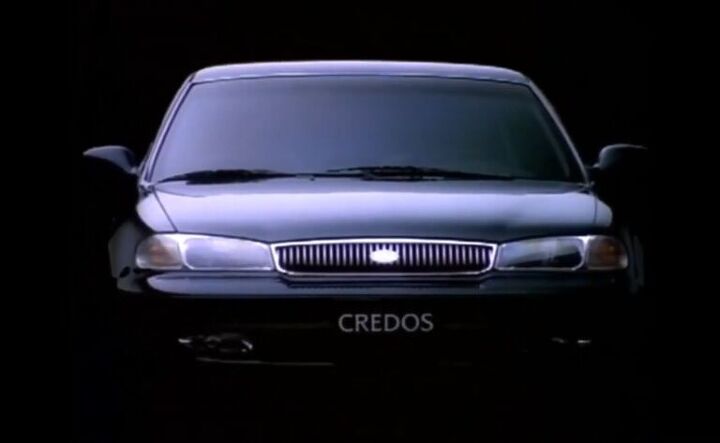






















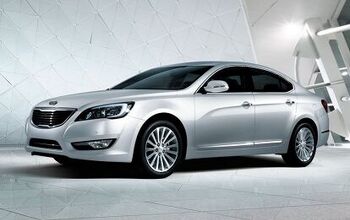
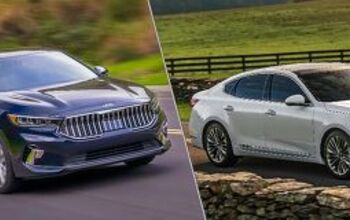
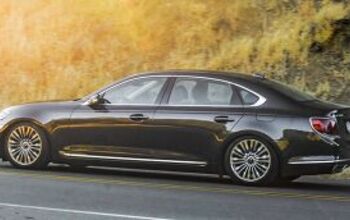
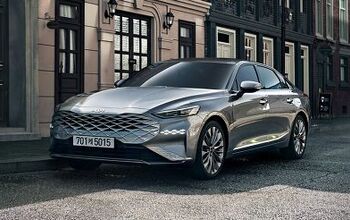











Comments
Join the conversation
Let Darwin the the wheel. Antimasks can die. that's less votes for them
Ugh, I mean ugh. The mid 90s were not an inspiring era for sedan design, but these bad boys are just... Plain Jane.